http://raisingmyboysinthecountry.blogspot.com
NOTE: All books have links beside them where they can be bought.
Here are links to other Homeschool Posts I wrote:
http://sixboysandalittlelady.blogspot.com/2008/02/homeschooling-our-way.html
http://raisingmyboysinthecountry.blogspot.com/2007/10/homeschooing-day-at-our-house.html
I learned with our oldest to play it light. When he was five years old I began school. I was so excited that I pulled out the workbooks - Abeka style and began reading, writing, math etc. He very quickly showed me that he was not ready for a 'traditional' kindergarten program. Even if the books said 'K' on them - it didn't mean they were K or that he was ready for K!!
I would get frustrated because he could not pull sounds together - I would get mad, he would cry. (Being brutally honest here. Some people *grin* think I write 'too nice'. Right, D?) My standards were too high. Not a nice way to do school. And trust me - if you go traditional and expect your child to read because 'that is what they are doing in kindergarten a public school' at age five, then you will get frustrated and when you are only teaching ONE child HE or SHE becomes the brunt of your frustration.
And just because in Kindergarten they are drilling the names of the letters, the sounds of the letters, and beginning words DOES NOT MEAN your child is ready for this!! And it is easy to measure your child against your friend's child, just because that child can do such and such. Every child is different, and what says that a child that can read is smarter than a child that has an amazing imagination? It is a fact that children in orphanages need to learn to play; they need to learn to imagine and do imaginative games.
A child in a homeschool setting that is allowed to learn at their own pace *will* have a good imagination because they are not being forced to do academics before they are ready.
Soon Dane, age 4, did not want to go to Kindergarten. He had seen Colt endure a year of school. Yes, I was still excited, but it was not what I was expecting. I had stepped into homeschooling thinking I would get my child to the age of 8, and by then he would be able to read and write, and then I would put him in school. I figured that would give him a few years of self worth, before he entered the public system where other kids began to tear down his feelings of who he was. I figured by eight, he would be pretty secure and could deal with the bullying and unkindness. That was my goal - get to grade 3.
Then one summer day, I fell across the Moore's book -

Successful Homeschool Handbook - and it changed my life.
They also wrote -

Better Late Than Early,

and Home Grown Kids.
Raymond and Dorothy Moore - anything by them is a *must read* if you are going to homeschool. These books will change your life. They show you how important it is for children to grow at a natural pace - not the pace the 'institution' or 'government' thinks they need to grow at. You learn through reading personal stories of families, how children learn from what is going on around them. For instance, if you are having a baby they are learning so much about biology; if you have a farm - they are learning about animal husbandry and harvesting and crops etc.
When I began to adopt this way of thinking my life and my children's lives changed!!! We began to homeschool with pleasure and joy!! Suddenly we were having fun!! And I can now look back and know that that was the turning point in my life. It was no longer - 'homeschool til grade 3' - it became 'homeschool as long as the Lord calls us to do so.'
Our oldest has been to public school for one year and then chose to come home. He did very well in highschool. He made friends and did all that was expected of him. He enjoyed taking classes he wasn't able to take at home. And he achieved very well on his marks. But he did not like seeing the standards of the other kids. He did not like the hopelessness - lack of future hopes and dreams of the majority of the children. He also knew that if he came home he could graduate early, while working 2-3 days a week getting life and work experience, plus saving more money in his house/college fund. And by the time he has graduated he will have had enough time to get his pilot's license!
So I can tell you, thirteen years after we began homeschooling, that we love to homeschool and it is a long term plan for us. I am so happy to be able to homeschool each of our children at the level they are at. We have eliminated the idea of 'grades' from our home. Why? Because, for example, we have one child who is doing Grade 10 French, Grade 9 Math, Grade 6 Language Arts and he is in Grade 5.
What is the purpose of the 'grade' system? To show an institution where the children are supposed to be herded when they come in the front door. In a home there is no need for this. You teach a child 'where he is at'. So if you have a 5 year old who doesn't want to read yet, who cares? By the time he is 11 he will be reading, IF you read to him, and expose him to good works of literature.
So what do we do with our five year olds?
Think about a regular kindergarten classroom. These are the 'stations' they have in a classroom: housekeeping - where they have dolls and play kitchens and laundry; rice or water table where they scoop and measure and play with boats; playdough or pliable dough; nature shelf where the class has collected items from walks or field trips - shells, leaves, plants they are growing; Painting easel; Craft table; Stamps, Scissors, and Punches; Dress-up; Free Play; Reading Corner - where there are library books to read; ABC or 123 section where they learn about academics;
Okay, so that is in a regular kindergarten classroom. Now let me show you how homeschool differs or is the same.
Housekeeping - where they have dolls and play kitchens and laundry;
Our children learn to diaper and dress and feed *real* babies as soon as they are five years old. Actually as soon as they have a baby brother arrive they begin helping. They are helping bring diapers, and clothes from the dresser, and helping to dress the baby. They are able to help you bathe the baby. They know how to push the baby in the stroller or play on the floor with the baby.
Our just turned three year old helps in the kitchen. The other day I was making cookies and he was able to help. He gets his chair and stands by the mixer. I break the eggs into the bowl and he tips them into the blender. He scoops me the flour and I cut it straight across the top for equal measuring. He then stands on his chair and scoop by scoop pours it into the mixer. He learns the following vocabulary: one cup, half a cup, teaspoon, eggs, baking soda, flour, oatmeal - all by hearing me say these words as he helps me to bake.
As soon as our children are able to walk they are working with laundry. They help empty the dryer into the basket and then push it down the hall. They learn to separate the towels, cloths, and rags from the rest of the laundry and then they hand deliver them to the correct drawer/cupboard. They also fold their own laundry by age three and put them in the correct drawers - which are labelled with words and/or pictures.
Rice or water table where they scoop and measure and play with boats;
We have a sink in our bathroom that has a stool pulled up to it. Under the sink there are scoops and measures and boats. Our three year old is capable of filling up his sink and he and the five year old play for hours with the water and toys. They learn all about science - size and volume and buoyancy all by playing. The same is done with a rice table - I prefer this to the sand table as it makes less mess. This can be simply a large dishwashing tub set up on the floor on a sheet, so that you can clean up the mess they make. Again, the same benefits as the water table.
Playdough or pliable dough;
We do not buy playdough. We make our own. It is simple to make and one of our older children always makes it for the younger ones. What am I saying? The older ones like to play too! They make is in a variety of colours and we keep it in zip loc bags. Gather some neat playdough cutters, little serving plates, knives, tea cups and watch the play ensue! This is the recipe:
2 cups flour
1/2 cup salt
2 tsp cream of tartar
2 cups water
2 Tbsp oil
Food colouring
1 Tbsp vanilla (for smell)
Blend the flour, salt, cream of tartar in a bowl. Set aside.
Mix water, oil, and food colouring in a saucepan.
Slowly whisk into the water the dry ingredients.
Mix on medium heat until it starts to thicken. Continue stirring.
Remove from heat while it is still not a formed ball. It will 'gather' as you need it and it cools.
Mix well and use a bit of flour if necessary.
Cool and add vanilla (optional).
There are tons of recipes for all kinds of fun pliables and not so pliables. Ever tried playing with Cornstarch and water? Pour the water in and stir it. It turns to liquid. Let it sit and it hardens like concrete. Stir it up again and it becomes like liquid. Lots of conversation and learning from that!
Nature shelf where the class has collected items from walks or field trips - shells, leaves, plants they are growing;
We go for a walk and pick flowers as we go. We bring them home and put them in an encyclopedia and press them. When they are dried - weeks later, in my life - we then put them on paper and cover them with a small piece of sticky clear paper for preservation. The children draw a likeness beside it, and then label them.
We have lots of nature books. We find flowers in the books that we want to study and the children will draw a likeness and label them. Other times, we will see some wildlife while out walking. We don't have our sketch books with us, so when we arrive home, we pull out the nature books and find the animal. The children then copy from the book and label. They will then write a narration of what occurred on the walk. The littlest ones can narrate to me. Here is an example of a newly turned three year old's nature narration:
Walk. And see horsies. And a black horsie. Wunning away. Twees. I saw a black one. Slippery on the woad. Another twee. Went to Wetty's house.
Translation. We went for a walk. And we saw horses. And a black horse. They were running away. There were trees. I saw a black tree. (burned) It was slippery (snow and ice) on the road. And I saw another tree. We went to Betty's house.
So even a small child can give you a narration and it is nice to keep it as they 'say it', as that is authentic and it won't be so long before their grammar and wording is correct and those sweet baby years are a distant memory. The drawing they can do at this age are also wonderful memories. This little three year old is now eleven and I am glad I have this. One day I will be compiling all of the work from their nature journals and putting them in a http://www.blurb.com/ book as a keepsake. In the meanwhile, I use binders and plastic page protectors to protect all of their art and writing work.
The children can also keep a Nature Shelf. This is where they put the items they have collected and want to display.
Some wonderful books regarding Nature Journaling:

Anna Comstocks - Handbook of Nature Study
 Wild Days - Creating Nature Journals.
Wild Days - Creating Nature Journals.  The Country Diary of an Edwardian Lady.
The Country Diary of an Edwardian Lady.  Keeping a Nature Journal - Clare Walker Leslie.
Keeping a Nature Journal - Clare Walker Leslie. This one does not have a picture available, but is a great book for setting up your own museum

This is easily done. We buy liquid tempera paints and have them on a bookshelf beside the easel. The five and three year olds can climb up and help themselves to the paints. Even the three year old knows exactly how much paint to squeeze into the little tubs. The five year old washes out the paint pots and the brushes and hangs up the smocks.
Craft table;

Our craft table is set up in the schoolroom/kitchen. This little table is in the corner with shelves beside it full of markers, crayons, paper, scissors, glue. I used to have them use our regular school table but found that we were too crowded and they couldn't do their crafts 'when they wanted' because my table was taken up too much of the time. So now we have their own little corner where stuff is available all the time.
Stamps, fancy scissors and punches.
The little ones are very capable of wielding a pair of scissors and the scrapbooking punches. They love to take the box of paper scraps from my scrapbooking and sit and cut and punch.
Dress-up;

I hit Walmart after Halloween and buy all the wonderful costumes that are on for 1/2 price!!! We have the most wonderful, high quality plush costumes of: giraffes, lions, tigers, leopards, dragons, knights, gorillas, Spiderman etc. I try to stay away from things that tell the kids what they are: commercialized costumes. Instead, I buy costumes that allow the child's imagination to go wild. Then of course, each year our kids are involved in a homeschool play, where they get to dress up as their character. They also like to take bits and pieces of old costumes and create their own.
Free Play;
We all have this: Duplo, Lego, Lincoln Logs, Brio train tracks, Kinex, Cars, Dolls - yep, we have boys and we have dolls - boys *love* to be daddies! I like to buy quality toys that I can add onto as the years go by. Toys that I will hang onto when the kids are grown up, so that their children have toys to play with when they come to visit. Mind you, at the rate we are going, we will have kids at home still when the grandbabies start coming!! *laugh*
Reading Corner - where there are books to read;
I buy books and lots of them!! I buy constantly. We just learned about the Iditarod and so we bought a handful of picture books and novels of the Iditarod. We use the library but I like to read the books we have, as we have so many of them and then there are no worries about overdue fees and lost books.
ABC or 123 section where they learn about academics;
If you want WONDERFUL and fun and gentle - here you go!
http://ebeth.typepad.com/serendipity/gnomes-and-gnumbers-a-mat.html
This is the most wonderful website. It shows you how to teach numbers through Gnomes and Gnumbers. To read through these Lessons - begin at the top and read down. It will begin with a story about some Gnomes. You will be given a supply list and suggestions.
http://ebeth.typepad.com/serendipity/along-the-alphabet-path.html
This part of the website teaches the alphabet. It begins with: A is for Apple Blossom and Angel of God. Each of the letters of the alphabet has a story attached to it. The site is full of ideas for nature, art, reading etc. It is a beautiful well rounded way of learning.
Look further into her site and you will see other gems!!
Back to the 'Academics', we have Educational Toys and here is just a handful of them:
Alphabet puzzles,

Number puzzles,

Picture puzzles - floor puzzles - lots of these!
 These are a big hit!! They are big enough for the little ones to be able to begin building when they are 2 or 3.
These are a big hit!! They are big enough for the little ones to be able to begin building when they are 2 or 3.
Different colour counters and sorting dishes of the same colour,
Linking cubes and pattern books,
Pattern blocks;
 These are wonderful for teaching Geometry before they are even aware they are learning it!! Briton was building with these and he is only just turned three. He needed to find a hexagon because he was building a pattern. This is teaching patterning in a natural way - not out of a workbook - simply from blocks! He was playing by himself and was creating his own design.
These are wonderful for teaching Geometry before they are even aware they are learning it!! Briton was building with these and he is only just turned three. He needed to find a hexagon because he was building a pattern. This is teaching patterning in a natural way - not out of a workbook - simply from blocks! He was playing by himself and was creating his own design.And there are of course, workbooks. I use these as much as a child is able. But I find that they learn better by hands on. It is so much more concrete when they are learning about colours: i.e.: red and yellow make orange - to actually use paint to *see* the transformation. But I have to say that I don't use much, as they get bored! They want to *experience learning*, not fill in pages that *tell them about learning*!
There are books that I will use for my early years, but I have found that I am not using these books until my child is between 6 and 7. It all depends on the child. The books that I will and do buy for my early years of learning are the following and each of them has a link where you can buy them. The store I have linked you to has great discounts and ships to Canada without a hassle at the post office.

First Language Lessons
I love this book. I use it with my 8 year old son. In the little book he has learned about:
Nouns, poem memorization; Story Narrations; Writing His Name; Proper Nouns - places, his address, days of the week; months of the year; Common Nouns - things, living things; Pronouns; Abbreviations; Verbs - action, state of being, helping etc; Titles of respect - I could go on and on.
It covers everything he will later learn in school, but this book teaches it on a oral language level of a 6-8 year old!! He has really enjoyed this oral book. There is very little writing involved. It is scripted so that the mum knows how to instruct the child. It is done in a very gentle way and there is tons of review. If I was to have only one grammar book to teach elementary school - this would be it. You can bring it up and make it harder or use it as it was intended.
 Reading Made Easy by Valerie Berndt
Reading Made Easy by Valerie BerndtThis book is a wonderful way to begin reading lessons with phonics. It is gentle and thorough and gives scripted sentences so the parent knows how to teach. By the time you have been through the 120 lessons, your child will be reading on a comfortable independent level.
These following books all teach the alphabet sounds. When they are done these I will then move them on to the full series of Explode the Code - books 1-8. I do not buy the 1 1/2, 2 1/2, 3 1/2 etc books, unless the child needs more repetition.

Get Ready For the Code - book a

Get Set For the Code - book b

Go For the Code - book c
This is just the beginning of the learning that goes on around our home. When we go shopping I send my four older children in four different directions with a list. They are responsible for getting what they know I buy. If there is a price comparison they are expected to do it and get the best buy. It doesn't always work out that way, though!
As for the little ones, I have Cooper, our five year old walk with me and pick things off the shelf as I call them out and point in the general direction. He is learning to identify what we need, buy the correct amount and be helpful.
There are life skills. Little ones can be helping with all the cleaning chores around the house, and baking, etc. There are so many ways to help a little one to reach to their full potential without putting them in front of a workbook. Play is so valuable. Play is a child's *work*. While I was being taught as an Early Childhood Educator we were given a book. It was called Work Jobs - why? Because it was filled with activities that look like play, but are actually *work* to a small child. They are learning through play. That is their 'work'.
My personal thoughts are - they are only little children for such a short time. There is so much time in their lives later on, for filling their mind with all the information that you think they need to know. Right now they are little - let them be little and learn through the joy of fun!
Learning comes in many forms - let them learn in the way they like best right now. Let them choose what they want to do. More often than not they will choose play, because that is *how* they learn!

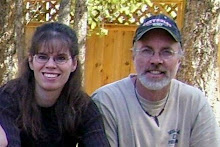

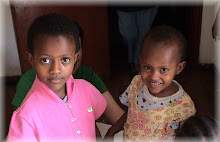
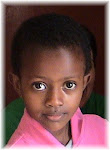
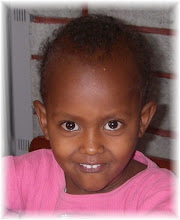


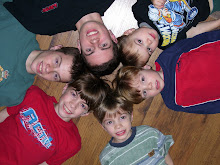

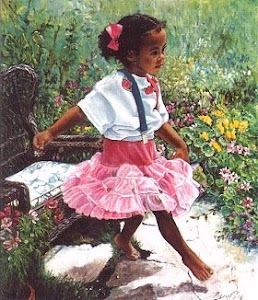








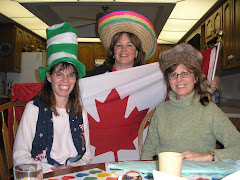
4 comments:
Great post!
Sandi
I love this post. I do an in home daycare with a preschool. I do themes each week, but mostly have lots of free time. Plus I limit tv to 20 min a day (the kids are with me 11 hours a day, so I do allow a little tv) or an extra video now and again if it relates to our theme.
We do every day: reading, outside play, free play, Bible verse or lesson, and prayer. At least once a week: arts and crafts, baking, science, math, fine motor, gross motor, and more. With art I give the kids materials but don't show them a finished product so they can create what there mind sees. I love watching what the kids come up with.
A while ago they started to play office, made there own desks and set up all on there own. They played for 3 days straight (of course I was not allowed to move the desks-lol) but they were doctor's, dentists, vet. I put my lessons on hold so they could do what they were doing. It was great! -Becky in NJ
Hi 'Steen,
I didn't get to read every word, short on time as usual, but scanned thru and am encouraged to read what you have here. Sounds like your methods are similar to what I did with my kids (and will do).
I know what you mean about the getting mad/kid crying stuff in the beginning of what you wrote. Been there, sorry to say. We moms learn a lot too, don't we, about what TO do as well as what NOT to do.
The Lord bless you for your diligence in homeschooling your children!
-Steen
Vanilla in Playdough -- what a great idea. Have you ever tried making the Kool Aid Playdough? It smells so yummy, but I suspect it goes bad faster than the regular kind.
What a great post!
Post a Comment